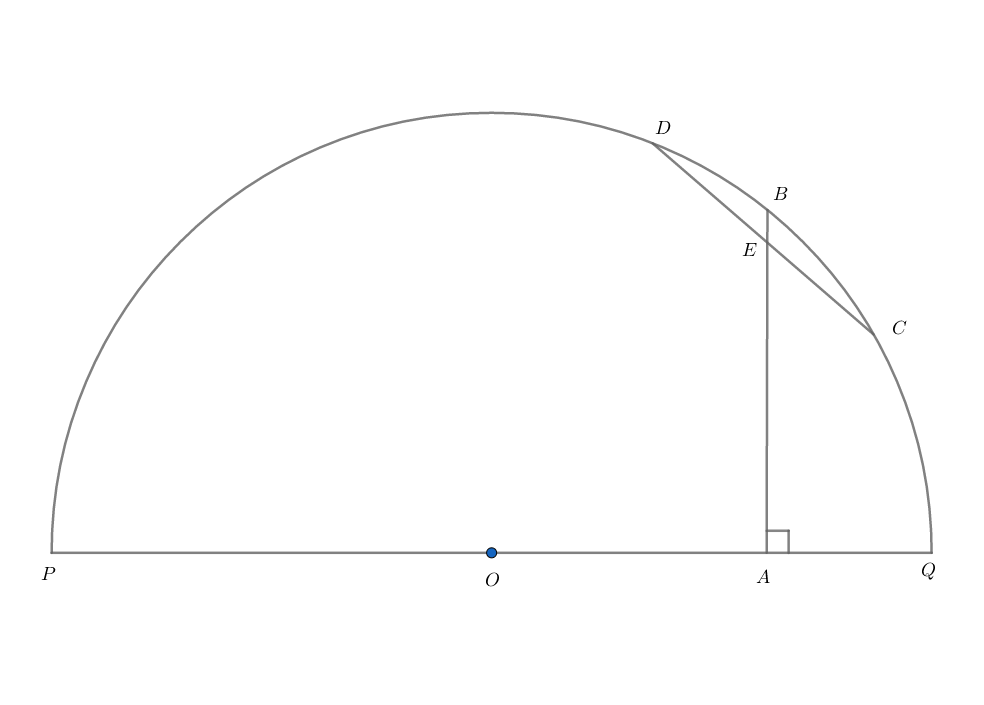Chord in Motion while Confined in Semicircle

Here:
- is a semicircle with center at and diameter .
- is a point on semicircle and is a point on diameter that and .
- is a chord that completely lies in the semicircle while its midpoint is a point between and .
Now:
- is the minimum possible value of .
- is the maximum possible value of .
- is the minimum possible value of the acute angle between and .
The sum can be expressed as , where each of , and is positive integers and is square-free.
Find the value of .
The answer is 250.
This section requires Javascript.
You are seeing this because something didn't load right. We suggest you, (a) try
refreshing the page, (b) enabling javascript if it is disabled on your browser and,
finally, (c)
loading the
non-javascript version of this page
. We're sorry about the hassle.
As A B is the geometric mean of P A and A Q , we can easily find O A = 4 8 and A Q = 2 .
The perpendicular bisector of a chord contains the center of a circle, so ∠ O E C = 9 0 .
All three conditions for α , β , and γ are met when C = Q . (Which is rather boring in my opinion, but it does make the problem easier.)
When we do this, A E becomes the geometric mean of 4 8 and 2 so A E = 9 6 or α = 4 6
We can then use the Pythagorean theorem on △ A E C to find C E = 1 0 or C D = β = 2 0
Also, csc γ = A C B C = 5
The sum is 2 5 + 4 6 so a = 2 5 , b = 4 , and c = 6 and the final answer is 2 5 ( 4 + 6 ) = 2 5 0